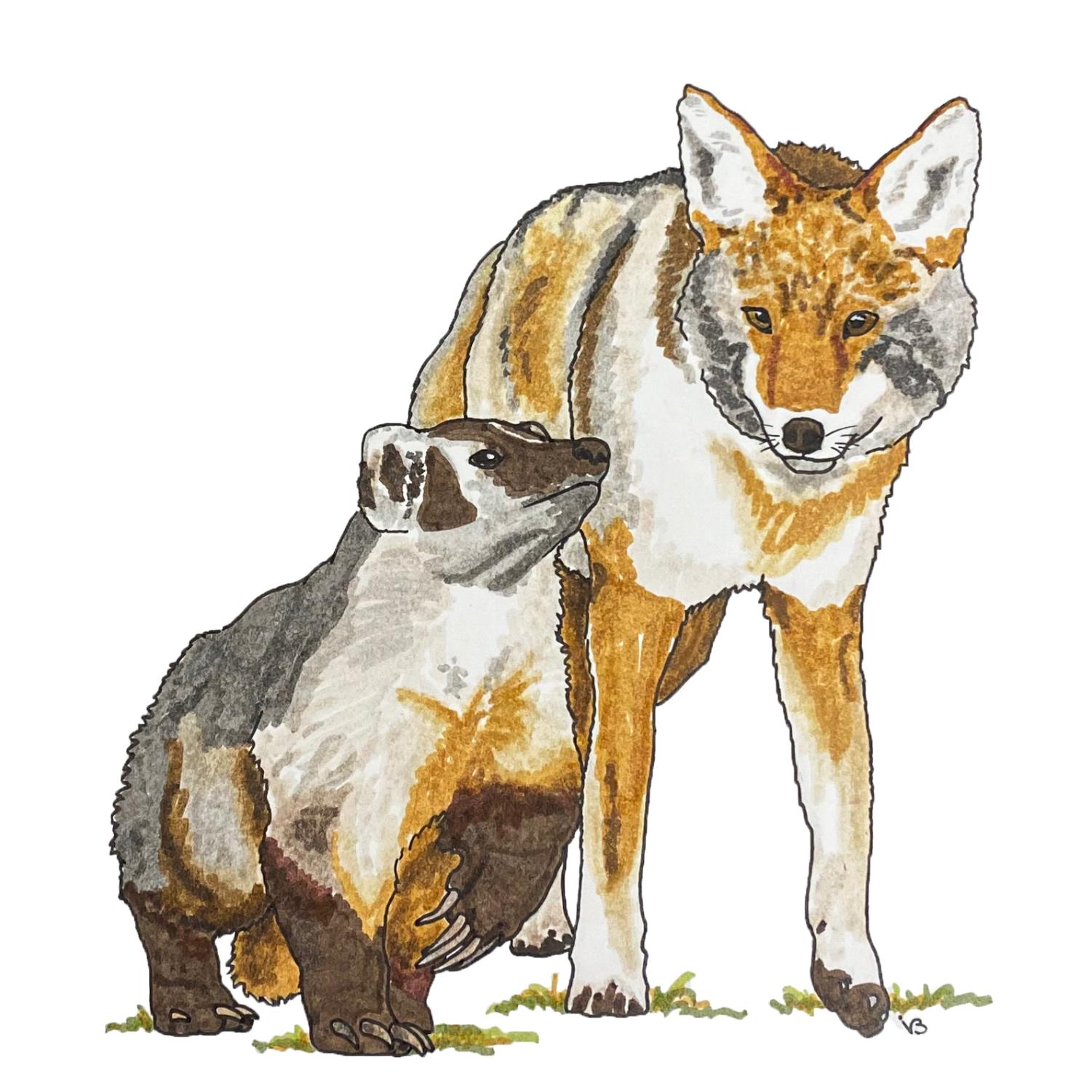- Living with Animals
- Posts
- The Buddy Movie We Never Knew We Needed: Coyote Meets Honey Badger
The Buddy Movie We Never Knew We Needed: Coyote Meets Honey Badger
Nature's Odd Couples: Exploring Inter-Species Friendships
Hey there, animal enthusiasts and fans of friendship tales that warm your heart,
Harriet the Bernedoodle here, bringing you a story that's as unexpected as it is delightful. It's about a friendship that defies the odds, starring two of nature's most fascinating characters: a coyote and a honey badger. Yes, you heard that right—a duo that sounds like they've jumped straight out of a buddy movie, and frankly, it's the cinematic adventure we've all been waiting for.
A Cross-Species Bond Like No Other
Recently, a video captured the hearts of many as it showed this remarkable twosome traversing under a freeway in the Bay Area of California. Their camaraderie was unmistakable; with the coyote's agile stride complementing the honey badger's determined trot, they moved with a sense of purpose and mutual respect. This isn't the first time such a pairing has been documented, but every new sighting reignites excitement among researchers and animal lovers alike.

A coyote and a badger
Why This Friendship Matters
What's truly captivating about these two is what their alliance represents—inter-species cooperation. In the wild, survival often means competition, yet here we see two very different creatures choosing companionship. This partnership is not just about navigating the physical landscape; it's a testament to the adaptability and social intelligence of animals.
A Reflection on Human-Animal Relationships
This unlikely friendship invites us to reflect on our own relationships with the animal kingdom. Especially for us dogs, who have been by your side for millennia, it underscores the importance of understanding, respect, and cooperation across species. Just as the coyote and honey badger support each other in their ventures, it reminds us of the deep bonds we can form with all animals, transcending instincts and expectations.
A Lesson in Friendship and Cooperation
The story of the coyote and honey badger is more than just a curiosity; it's a lesson in the unexpected ways friendship can form. It teaches us about the possibilities of cooperation, not just in the wild, but in our own lives. In a world where differences often divide, this duo shows us the strength found in coming together, celebrating our diversity, and working as a team.
|
Inter-species cooperation is a fascinating aspect of animal behavior, illustrating the complex and often surprising ways in which animals interact with each other. Here are a few notable examples:
1. Dolphins and Fishermen: In Laguna, Brazil, bottlenose dolphins and local fishermen work together to catch mullet fish. The dolphins use their skills to herd the fish towards the shore, where the fishermen wait with nets. The dolphins then signal the fishermen when to cast their nets. This cooperation benefits both parties: fishermen catch more fish, and the dolphins can easily pick off the fish that escape the nets.
2. African Honeyguide Birds and Humans: In parts of Africa, the honeyguide bird leads humans to beehives. The humans then break open the hives to harvest the honey, leaving behind wax and larvae, which the birds eat. This remarkable example of mutualism shows the bird's understanding of human behavior and its ability to communicate effectively with humans to achieve a common goal.
3. Moray Eels and Groupers: In the coral reefs, moray eels and groupers have been observed hunting together. The grouper will signal to the eel, and they will flush out prey from crevices in the reef. This teamwork increases their chances of a successful hunt, as the prey has no place to hide.
4. Ants and Aphids: Ants and aphids have a symbiotic relationship where ants protect aphids from predators and parasites. In return, the aphids produce a sweet substance called honeydew, which the ants consume. The ants may even move the aphids to better feeding locations to ensure a constant supply of honeydew.
5. Buffalo, Birds, and Other Grazers: Birds such as oxpeckers have a mutualistic relationship with large mammals like buffalo, giraffes, and rhinoceroses. The birds eat ticks and other parasites that they find on the mammals' skin, providing a grooming service. In return, the birds receive a steady food source.
These examples highlight the incredible adaptability and intelligence of animals, demonstrating that cooperation can transcend the boundaries of species for mutual benefit.
With a wag and a woof for all my inter-species friends,
Harriet 🐾


:max_bytes(150000):strip_icc()/__opt__aboutcom__coeus__resources__content_migration__mnn__images__2016__11__coyote-and-badger-1-607a73ef0400481bbeb47ea15379734e.jpg)
Reply